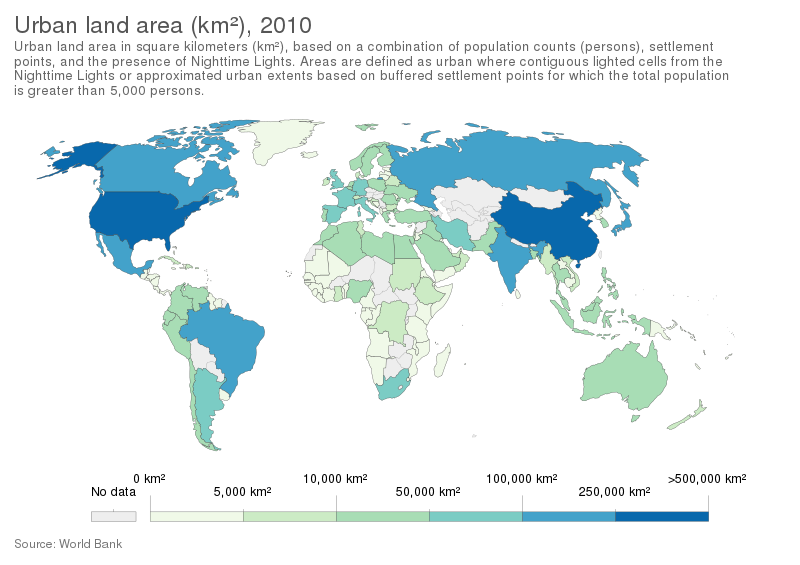Urban environments are human settlements with high population densities and infrastructures. A lot of factors contribute to the development and growth of an urban area, but one of the more significant factors to consider for an urban area is housing and infrastructure.
Housing
In an MEDC (More Economically Developed Countries) like the United Kingdom, the local authorities have a duty to house homeless people in need, such as families with children, pregnant women, the elderly and the disabled. The typical homeless person in an MEDC is a 35-year-old male with little or no academic qualifications. This means that their employment prospects are low. Within MEDCs, homeless people often have either a mental or a physical disability, which has caused them to become homeless. In the United Kingdom, the current rate of homeless people is approximately 7 in every 1,000 people.
LEDCs (Less Economically Developed Countries), on the contrary, have an altogether different problem related to housing: they experience squatter settlements, also known as favelas, barrios, and shantytowns. The largest squatter settlement in Mexico is called the Neza-Chalco-Itza barrio. Shantytowns can cause extensive problems for cities because they are usually built on the outskirts and thus drain resources. There is often inadequate electricity, sanitation, and communications. They are often very disorganised, lack street names and house numbers. Shantytowns are increasingly occupied by large gangs where drug dealing is a significant issue in the community. With drug gangs maintaining control over areas, the city police don’t dare enter some for fear of violence. Favelas or shantytowns in Brazil are on the outskirts of the main cities of Sao Paulo and Rio de Janeiro and a result of a decrease in jobs in rural areas due to mechanisation and the allure of the bright lights of the city. Favelas and shantytowns are often made from materials scavenged locally; houses are usually erected from corrugated iron, plastic, and wood, and in the event of storms, fires, or natural disasters, problems and high levels of damage occur.
To learn more about the importance of ecosystems and sustainability in the urban environment, keep reading!
Frequently Asked Questions
What is the relationship between sustainability and the urban environment?
Sustainability and the urban environment are closely interconnected. Sustainable urban development aims to create cities and communities that meet present needs while ensuring the well-being of future generations, through efficient resource use, reduced environmental impact, social inclusivity, and economic prosperity.
How can sustainable practices be implemented in the urban environment?
Sustainable practices in the urban environment can include promoting energy-efficient buildings, investing in renewable energy sources, improving public transportation systems, enhancing green spaces and urban biodiversity, implementing waste reduction and recycling programs, and engaging in community-based initiatives for sustainability.
Why is sustainable urban planning important?
Sustainable urban planning is essential for creating livable and resilient cities. It involves considering factors such as efficient land use, integrated transportation systems, affordable housing, access to essential services, equitable distribution of resources, and preservation of cultural heritage, all while minimizing environmental impacts.
How does sustainable urban design contribute to environmental conservation?
Sustainable urban design incorporates elements such as green infrastructure, energy-efficient buildings, rainwater harvesting, urban agriculture, and smart waste management systems. These strategies reduce energy consumption, minimize pollution, enhance biodiversity, mitigate the urban heat island effect, and improve overall environmental quality.
Sustainable urban practices provide numerous social and economic benefits. They include improved quality of life, enhanced public health through cleaner air and access to green spaces, reduced vulnerability to climate change impacts, job creation in sustainable sectors, increased energy and resource efficiency, and cost savings in the long run through reduced operational expenses.
Image source
Urban Land Area Map https://commons.wikimedia.org/wiki/File:Urban_land_area_(km%C2%B2),_OWID.svg






